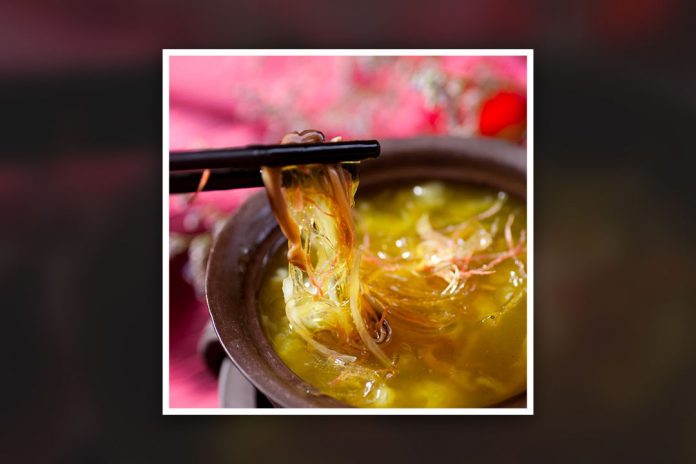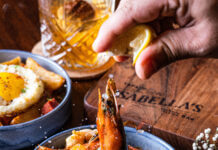Shark fins are tempting targets for fishermen because they have high monetary and cultural value. They are used in a popular dish called shark fin soup, which is a symbol of status in Chinese culture.. Today shark fin soup is still prevalent and has become a staple for special occasions. Its quite natural, the fishermen have a large incentive to gather and sell shark fins
Sharks have been feared hunters ever since people first observed them swimming in the vast ocean. Yet today, sharks are declining rapidly on a global scale because humans have replaced them as the ocean’s top predators. One way that humans hunt sharks is by using a practice called shark finning. This is the process of slicing off a shark’s fin and discarding the rest of the still-living body, often by dumping it back into the ocean.
With their slow growth and low reproductive rates, sharks are highly susceptible to extinction, and it is difficult for many shark species to replenish their populations as quickly as they are being diminished. Many species of sharks are currently in danger due to shark finning, including the scalloped hammerhead, and the smooth hammerhead.
Additionally, many individual countries are making their own protections. For instance, all sharks caught in U.S. waters must be brought to shore with their fins still attached according to the 2010 Shark Conservation Act. Since 1994, 22 countries have placed domestic regulations on shark finning.
A shark fin has very little muscle tissue. There is a membrane, and in some cases a fatty layer under the skin, covering a bundle of collagen fibres spread out like a fan. In most fins these fibres are supported by a cartilaginous platelet in the centre
The cartilaginous platelet is absent in the caudal fin. Sharks do not have scales. The skin of the fins, like that of the rest of the shark’s body, is covered with large numbers of usually very small thorn-like structures or denticles. These make sharkskin feel like sandpaper.
The collagen fibres of the fin are rounded at the base, tapering to fine points at their extremities, giving the appearance of needles. Appropriately, they are commonly known as fin needles. Separately or joined as a bundle, the fin needles will eventually find their way in different preparations onto the dining table.
A popular, low-cost imitation shark fin soup made using vermicelli is widely available in Asia. They can also be made from cellophane noodles. Seafood companies in Asia later developed edible gelatinous products to imitate shark fins’ qualities, commonly referred as “imitation shark fins”.
Its unethical and cruel to cut the dorsal fin of the shark, and leave it back to the sea where it dies a natural death of blood oozing. `Coz of this cruelty to animal shark finning is banned in almost all countries and in India too.
The seafood companies find their way to bring alternate sharks fin and sell the same on lower prices which common man can afford. A fully grown shark only has the
The quality of the fin is checked, by holding against sunlight and u can see the fin inside. In other words they call it the Golden ray skin or Blonde ray, which reminds you of a blonde`s hair.
To my Limited Knowledge, the raw sharks fin is dried in natural light, totally made free of moisture content. After that thro a chemical reaction, for weeks and then the skin is removed easily. You get the golden ray. They are dried and the trade becomes active.
But people cant wait for the long process, they go for the crude form of sharks fin, be it original or imitation.
Author
SuperChef Nandakumar

Chef Nandakumar Menon or ‘Chef Nandu as he is known evolved into the Super Chef series. He was at the CASINO HOTEL in Kochi and later at the remarkable COCONUT LAGOON in Kumarakom. Both iconic Hotels and restaurants of repute for the quality and consistency of food offered at their restaurants. Coconut Lagoon where Chef Nandu headed the kitchen moulded him to cater to international clientele from all over the world coming in to experience the magic of the backwaters of Kerala and Kerala itself as a unique destination.
From his early Catering Technology days at Adayar, Chennai and training at the famed TAJ MAHAL INTERCONTINENTAL HOTEL, Mumbai, Chef Nandu was back again at the Welcome Group’s ADAYAR PARK INN, Chennai.
Later he headed the setting up of the various F&B outlets of the ABAD PLAZA group, Kochi as its Corporate Chef.
And then with the Quilon Beach hotels, Chef Nandu created a redefined art of culinary expertise. His clientele were Doctors, Cashew businessmen and of course celebrities from the tinsel world, the cloyed connoisseurs had a different feel with his nouvelle cuisine.
He still loves to cook and share his valuable experience of the world of food with The Daily Brunch and its readers in our series on SUPER CHEFS.
Cheers!
See more from SuperChef Nandakumar

Chef Nandakumar Menon or ‘Chef Nandu as he is known evolved into the Super Chef series. He was at the CASINO HOTEL in Kochi and later at the remarkable COCONUT LAGOON in Kumarakom. Both iconic Hotels and restaurants of repute for the quality and consistency of food offered at their restaurants. Coconut Lagoon where Chef Nandu headed the kitchen moulded him to cater to international clientele from all over the world coming in to experience the magic of the backwaters of Kerala and Kerala itself as a unique destination.
From his early Catering Technology days at Adayar, Chennai and training at the famed TAJ MAHAL INTERCONTINENTAL HOTEL, Mumbai, Chef Nandu was back again at the Welcome Group’s ADAYAR PARK INN, Chennai.
Later he headed the setting up of the various F&B outlets of the ABAD PLAZA group, Kochi as its Corporate Chef.
And then with the Quilon Beach hotels, Chef Nandu created a redefined art of culinary expertise. His clientele were Doctors, Cashew businessmen and of course celebrities from the tinsel world, the cloyed connoisseurs had a different feel with his nouvelle cuisine.
He still loves to cook and share his valuable experience of the world of food with The Daily Brunch and its readers in our series on SUPER CHEFS.
Cheers!




















